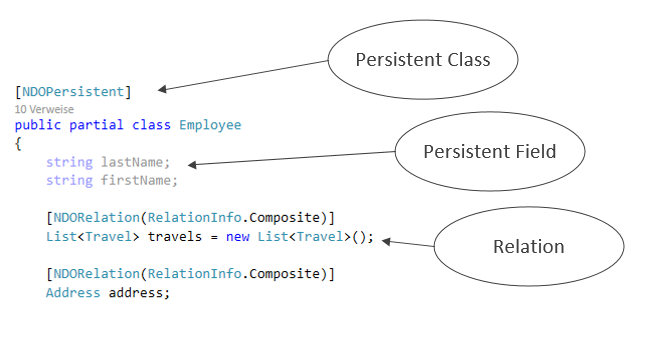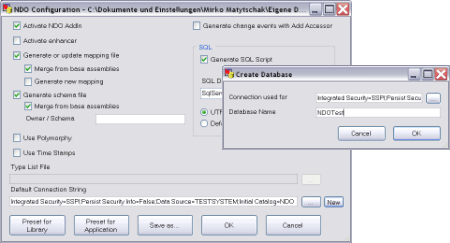Persistent Classes
Step 1: Write Classes
You are programming normal .NET classes that describe your application domain. You simply map relationships to other persistent classes with fields of the type of the other class or with List<T>.
Step 2: Mark your classes as persistent
You mark your classes with the [NDOPersistent] attribute. Relations are marked with the [NDORelation] attribute. These are the only two attributes you need for NDO. The NDO Add-in helps you: You can create persistent classes and relationships at the touch of a button on the NDO toolbar in Visual Studio.

